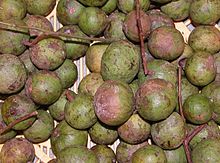
The economy of Vietnam is a developing mixed socialist-oriented market economy, which is the 36th-largest in the world as measured by nominal gross domestic product (GDP) and 26th-largest in the world as measured by purchasing power parity (PPP) in 2022. Vietnam is a member of the Asia-Pacific Economic Cooperation, the Association of Southeast Asian Nations and the World Trade Organization.

Calamansi, also known as kalamansi, calamondin, Philippine lime, or Philippine lemon, is an economically important citrus hybrid predominantly cultivated in the Philippines. It is native to the Philippines; parts of Indonesia, Malaysia, and Brunei ; as well as parts of southern China and Taiwan. Calamansi is ubiquitous in traditional Philippine Cuisine. It is naturally very sour, and is used in various condiments, beverages, dishes, marinades, and preserves. Calamansi is also used as an ingredient in Malaysian and Indonesian cuisines.

Rambutan is a medium-sized tropical tree in the family Sapindaceae. The name also refers to the edible fruit produced by this tree. The rambutan is native to Southeast Asia. It is closely related to several other edible tropical fruits including the lychee, longan, pulasan, and quenepa.

Dimocarpus longan, commonly known as the longan and dragon's eye, is a tropical tree species that produces edible fruit. It is one of the better-known tropical members of the soapberry family Sapindaceae, to which the lychee and rambutan also belong. The fruit of the longan is similar to that of the lychee, but less aromatic in taste. It is native to tropical Asia and China.

The persimmon is the edible fruit of a number of species of trees in the genus Diospyros. The most widely cultivated of these is the kaki persimmon, Diospyros kaki – Diospyros is in the family Ebenaceae, and a number of non-persimmon species of the genus are grown for ebony timber. In 2019, China produced 75% of the world total of persimmons.

Jujube, sometimes jujuba, known by the scientific name Ziziphus jujuba and also called red date, Chinese date, and Chinese jujube, is a species in the genus Ziziphus in the buckthorn family Rhamnaceae.

The jackfruit, also known as the jack tree or langka, is a species of tree in the fig, mulberry, and breadfruit family (Moraceae).

Da Nang or Danang is a class-1 municipality and the fifth-largest city in Vietnam by municipal population. It lies on the coast of the East Sea of Vietnam at the mouth of the Hàn River, and is one of Vietnam's most important port cities. As one of the country's five direct-controlled municipalities, it falls under the administration of the central government.
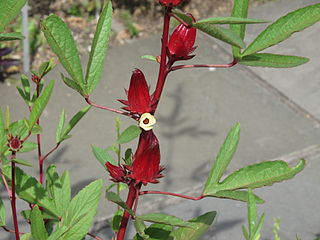
Roselle is a species of flowering plant in the genus Hibiscus that is native to Africa, most likely West Africa and also found in India especially Maharashtra with local name ambali. In the 16th and early 17th centuries it was spread to the West Indies and Asia, respectively, where it has since become naturalized in many places. The stems are used for the production of bast fibre and the dried cranberry-tasting calyces are commonly steeped to make a popular infusion known as carcade.
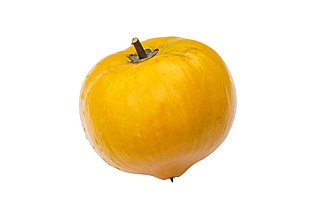
Pouteria campechiana is an evergreen tree native to, and cultivated in, southern Mexico, Belize, Guatemala, and El Salvador. It is cultivated in other countries, such as India, Costa Rica, Brazil, the United States, the Dominican Republic, Australia, Cambodia, Vietnam, Indonesia, Sri Lanka, Nigeria, and the Philippines. The edible part of the tree is its fruit, which is colloquially known as an egg fruit.

Dracontomelon is a genus of flowering plants in the family Anacardiaceae, growing mostly in SE Asia and the Pacific islands. The fruit may be used in local cuisine, especially as souring agents.

Vietnam is a dynamic developing economy with a relatively high growth rate. The energy sector plays a key role in promoting the country's socio-economic development. Vietnam has a diverse energy fuel resource of various types such as coal, natural gas, petroleum, hydropower and renewables such as solar and wind energy. The country has recently been successful in renewable energy deployment, especially solar and wind power development. Coal has been the key power generation source since 2018. Coal accounted for about 30% of installed capacity and 47% of electricity generation in 2021 The high use of coal makes Vietnam an increasingly important emitter of carbon dioxide, contributing to climate change.
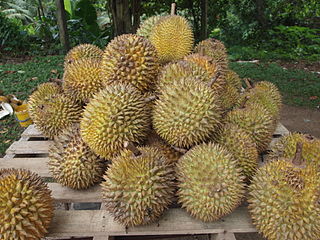
The durian is the edible fruit of several tree species belonging to the genus Durio. There are 30 recognised Durio species, at least nine of which produce edible fruit. Durio zibethinus, native to Borneo and Sumatra, is the only species available on the international market. It has over 300 named varieties in Thailand and 100 in Malaysia as of 1987. Other species are sold in their local regions.

Dracontomelon dao, the Argus pheasant-tree, Pacific walnut, Papuan walnut, New Guinea walnut, paldao or simply dao, is a tree in the family Anacardiaceae, native to tropical Asia.
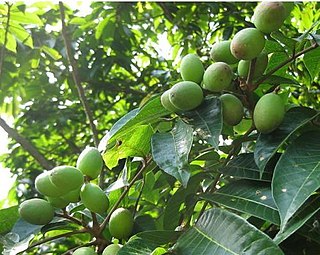
Canarium album is a tree species in the genus Canarium and the family Burseraceae, found in Indo-China; the Catalogue of Life does not record any sub-species.

Lai Châu is a province in the Northwest region of Vietnam. Lai Châu province is one of the most sparsely populated regions in Vietnam, and it shares a border with China. It was once a semi-independent White Tai confederation known as Sip Song Chau Tai, but was absorbed by France into French Indochina in the 1880s and subsequently became part of Vietnam following Vietnamese independence in 1954. It became part of the Northwest Autonomous Area of the Democratic Republic of Vietnam from 1955 to 1975, when Lai Châu province was formed. Điện Biên province was carved out of Lai Châu in 2004. The province covers an area of 9068.79 square kilometres and as of 2019 it had a population of 460,196 people.

Avocado production is important to the economy of Mexico with the country being the world's largest producer of the crop. Mexico supplies 45 percent of the international avocado market. Of the 57 avocado producing countries, the other major producers are Dominican Republic, Peru, Colombia, and Indonesia, in that order.
The horticulture industry embraces the production, processing and shipping of and the market for fruits and vegetables. As such it is a sector of agribusiness and industrialized agriculture. Industrialized horticulture sometimes also includes the floriculture industry and production and trade of ornamental plants.

Kostas Sarantidis, also known in Vietnamese as Nguyễn Văn Lập, was a Greek captain of the People's Army of Vietnam who fought with the Viet Minh during the First Indochina War, seeking independence for Vietnam from the French colonial empire. He received Vietnamese citizenship in 2010 and in 2013, he was awarded the Hero of the People's Armed Forces order.
